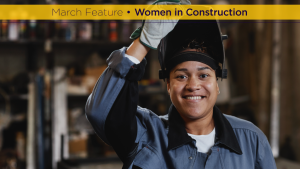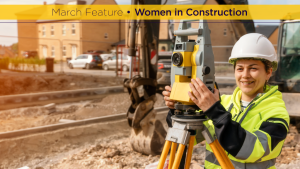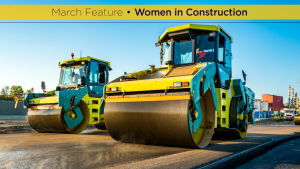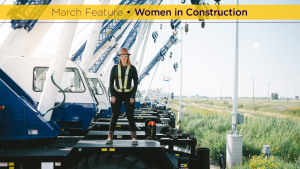After several years of gains, the number of women in trades dropped in 2019, according to a recent Statistics Canada’s Labour Force report.
In 2019 there were 182,000 women in the construction sector out of a total work construction sector workforce of 1.463 million. That’s down from 2018 when there were 186,300 women out of 1.437 million.
While there were fewer women — albeit only 4,300 — the number of men working also grew by 26,000.
It also comes on four years of growth: In 2017 there were 174,800 women in trades out of a total 1.409 million workforces. In 2016 it was 162,400 out of 1.385 million, in 2015, 158,200 out of 1.371 million.
It can make for depressing reading for those working overtime to raise the profile and numbers of women in construction trades but the numbers, apparently, don’t tell the full story.
Nina Hansen, Executive Director at the British Columbia Centre for Women in the Trades (BCCWITT) responded: “We have definitely not hit a wall. There are a lot of women that really want to pursue these careers — just like there are a lot of men that really don’t but may be stuck in them for various reasons. However, women continue to face unique barriers to entering, advancing and staying in the trades.”
Apprenticeships are rising steadily, she says, and regionally B.C. is performing strongly with large numbers of women in the trades though some areas like Alberta have experienced a construction slowdown.
“Further, some women leave the trade for trades’ adjacent jobs, which is not at all a bad thing: management, union representatives, inspectors, trades instructors, etc.,” she says. “Or, they take a short-term leave to go to school — foundation programs are about 10 months long) — or they have children.”
Indeed, says Cheryl Paron International Representative, First District (Canada), International Brotherhood of Electrical Workers, in B.C. 27 per cent of the union’s provincial membership are women.
“I also think those numbers don’t show women in the trades on tools but perhaps working in construction related jobs,” she says, echoing a concern among stakeholders that there simply isn’t enough data on the long-term progress of women in construction.
Luana Buratynski, president of the Canadian Association of Women in Construction, says their organization strives to attract women from across all trades to get involved with an industry group, not just because of the networking and support but to act as mentors and role models for other women in construction — or those considering construction.
“We need more women leaders because there are gaps in management in all facets of the sector,” she says. “In groups like ours we want to help women develop the soft skills they’ll need to move up in construction management.”
And that applies to construction office workers as much as tradeswomen on the tools, she says, because career paths to management on site require a variety of skills beyond swinging a hammer or wiring a panel.
Tradeswomen, like any other skilled trade, are constantly upgrading their skills and learning new technology and they should also look at upgrading their management skills through membership in women-focused groups, she adds.
Still, she also feels that there’s not enough data tracking of women in construction to know where they go, why they leave the sector and what would keep them working in construction.
It is the data which is critical, says Karen Walsh, executive director and project consultant at the Office to Advance Women Apprentices based in Newfoundland.
She says after there are some inspirational success stories proving women are adopting and adapting to construction skills trades. About 13 years ago Newfoundland and Labrador was about to see an explosion of large-scale industrial projects such as Muskrat Falls and Vale nickel.
The issue was a shortage of skilled trades, especially with many of the homegrown trades people off out west in the energy patch during that boom time.
In response, the government of the day put on a push to attract more women into apprenticeships.
“Still, we found that often women who took the basic courses didn’t go on further,” she says. “And so, when we looked, we found the barriers to getting employment were the issue.”
The women either didn’t live near the large projects and may also have had childcare issues and that in many cases men were getting the nod ahead of them.
She arrived nearly 10 years ago and immediately set about creating a database of names, skills and most importantly postal code.
“We could then search the database and match a skilled trade, level of experience and where that person lived,” she says.
They also started advising women interested in the trades to match their choice of skilled apprenticeship with the region they lived in.
“There’s not much point in going in for sheet metal worker if there are no jobs or companies where you live,” she says. “We also started offering wrap around support for those women who did get jobs to ensure they didn’t feel isolated when there were no other women working with them.”
Slowly things picked up and women started getting hired at small and medium sized companies operating regionally. There was the usual sexist skepticism at first, she says, but the women soon proved their worth.
When she started less than three per cent of women were in trade jobs, today 13 per cent of the skilled trades positions in Newfoundland Labrador, P.E.I. and New Brunswick are occupied by women and that share is growing.











Recent Comments
comments for this post are closed